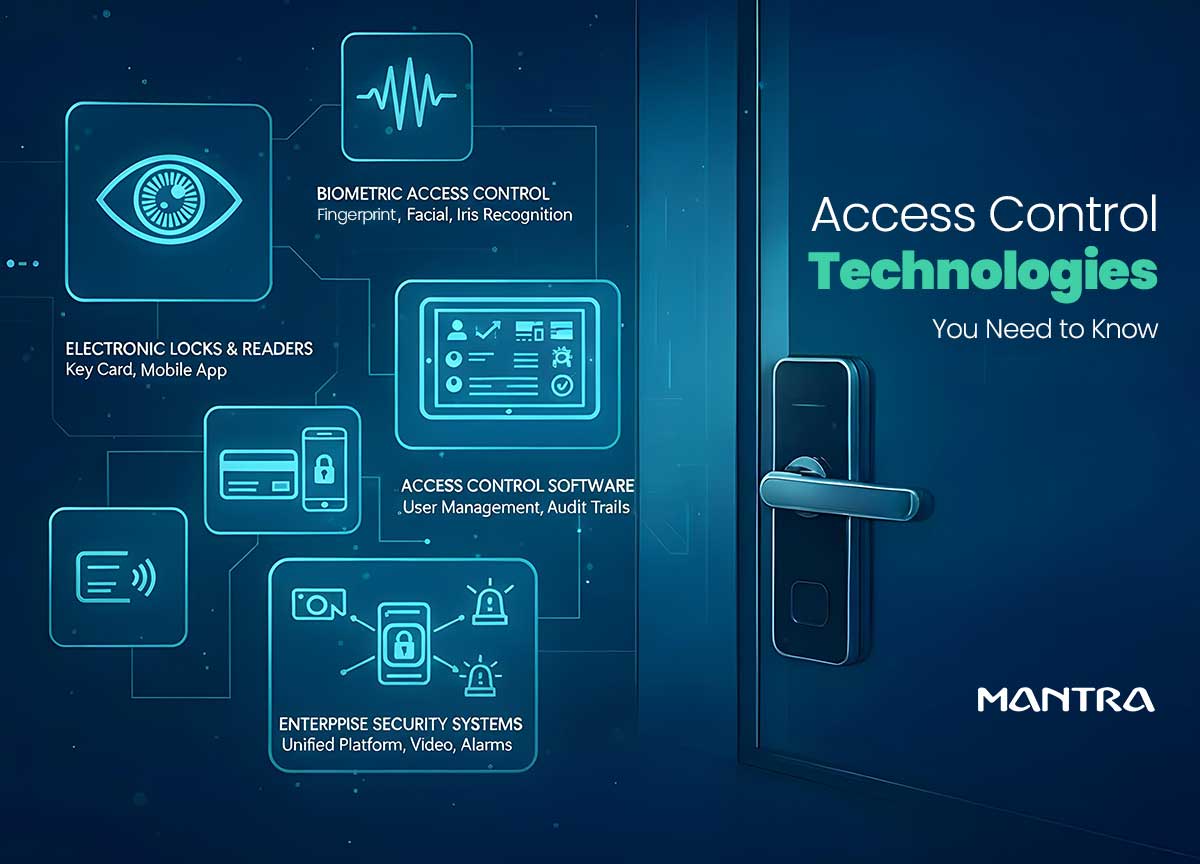
Introduction
Access control is at the heart of physical and digital security. It regulates who can enter spaces, use resources, or access data. A well-designed system doesn't just unlock doors—it provides visibility, accountability, and compliance. By integrating hardware, software, and smart policies, organizations can create an environment where assets, employees, and visitors are protected without disrupting everyday operations.
Every facility is different. A hospital has very different access needs compared to a manufacturing plant or a government building. That's why access control systems are modular: they combine readers, credentials, locks, wiring, software, and integrations in different ways to suit specific environments.
Readers and Credential Technologies
The reader is the first touchpoint between the user and the system. It validates the credentials presented and communicates with the system to allow or deny access. Credentials can be classified as:
Something you know (a PIN or password)
Something you have (a key card, fob, or smartphone)
Something you are (biometric data like fingerprints or facial recognition)
Different technologies exist at varied costs and security levels:

Keypads (PIN codes):
Simple and inexpensive, but usually combined with another factor to reduce risk.

Magnetic Stripe Readers:
Once widespread, now considered outdated because they are easier to clone.

Proximity Readers:
Still very popular, offering contactless card access. Smart card formats (13.56 MHz) add encryption and better protection.

Bluetooth Low Energy (BLE):
Smartphones double as access credentials, giving users convenience and administrators centralized control.

Biometric Readers:
Fingerprint, iris, or facial recognition systems for environments where high security is non-negotiable.
Modern dual-technology readers allow organizations to transition gradually between credential types or enforce two-factor authentication (e.g., card + PIN). This flexibility ensures systems stay secure while adapting to evolving user needs.
System Control Hardware
Readers and sensors cannot work alone; they must connect to system control hardware that makes real-time access decisions.
Reader Interface Modules (RIMs): These handle signals from readers, door sensors, and exit devices.
Access Control Panels: Often installed in IT closets, panels verify credentials and coordinate multiple doors.
For large enterprises, multiple panels are networked, ensuring a scalable and unified approach. This hardware serves as the "nervous system" of access control, ensuring that decisions are executed reliably and consistently across all entry points.
Locking Hardware
Locks are the final barrier between unauthorized users and restricted spaces. Integrated with electronic access systems, they offer different levels of strength and control:
Electric Strike Locks: Installed in the door frame; reliable and widely used.
Cylindrical Locks: Cost-effective, placed inside the door pocket.
Magnetic Locks: Mounted on the frame above the door; simple but require correct safety configuration.
Mortise Locks: Heavy-duty, recessed into the door, ideal for high-traffic areas.
Locks must also comply with fire and safety regulations. A critical design decision is whether the lock should default to fail-safe (unlock during power outages) or fail secure (stay locked). These choices directly affect both safety and security during emergencies.
Wiring and Power
The reliability of an access control system depends heavily on its wiring and power design.
Low-voltage shielded wiring ensures secure communication between devices.
Ethernet cabling (Cat6) is used for network-connected panels.
DC power supplies with battery backups keep systems operational during outages.
If the wiring layout is poor or the power source fails, even the most advanced hardware becomes ineffective. That's why access control planning must always include redundancy and backup systems.
Ancillary Hardware
Beyond the essentials, supporting devices add functionality and safety:
Alarms, strobes, and sounders warn when a door is forced or left open.
Automatic door operators improve accessibility for people with disabilities.
Request-to-exit devices simplify safe and compliant egress.
These accessories might seem minor, but they can transform the system into one that is both secure and user-friendly.
Access Control Software
The software is the "brain" of the system. Whether hosted on-site or in the cloud, it controls how permissions are assigned, logs activity, and generates reports.
Key capabilities include:
User management to assign and revoke access.
Real-time monitoring and alerts for suspicious activity.
Audit trails to satisfy compliance requirements.
Analytics and reports to detect usage trends.
Mobile and remote management for administrators.
Without robust software, hardware becomes just a collection of locked doors. Software turns data into insights and policies into actionable controls.
Security Integrations
No modern access control system exists in isolation. Integrations expand its value and create a unified security ecosystem:

HR systems:
Automate employee onboarding and offboarding.

Video surveillance:
Provide visual confirmation for access events.

Visitor management:
Ensure smooth, secure guest entry.

Building automation:
Connect with HVAC, lighting, or elevators for energy savings and convenience.
This interconnected approach transforms access control from a security tool into a business enabler.
Final Thoughts
Access control technology has moved far beyond simple locks and keys. Today's systems combine smart readers, electronic locks, reliable wiring, intelligent software, and powerful integrations. When implemented correctly, they not only keep people and assets safe but also improve efficiency, compliance, and user experience.
Every organization should carefully evaluate its environment, regulatory requirements, and future growth plans before selecting access control technologies. With the right mix, access control becomes a strategic investment in safety, trust, and operational excellence.
Comments